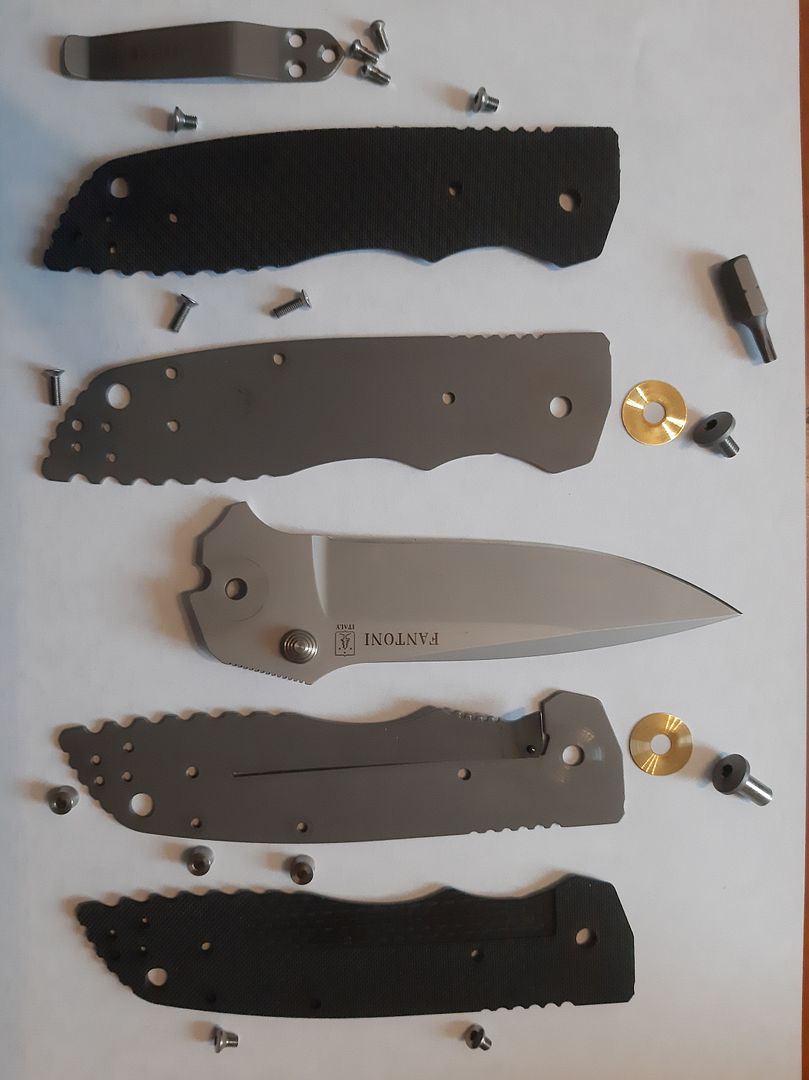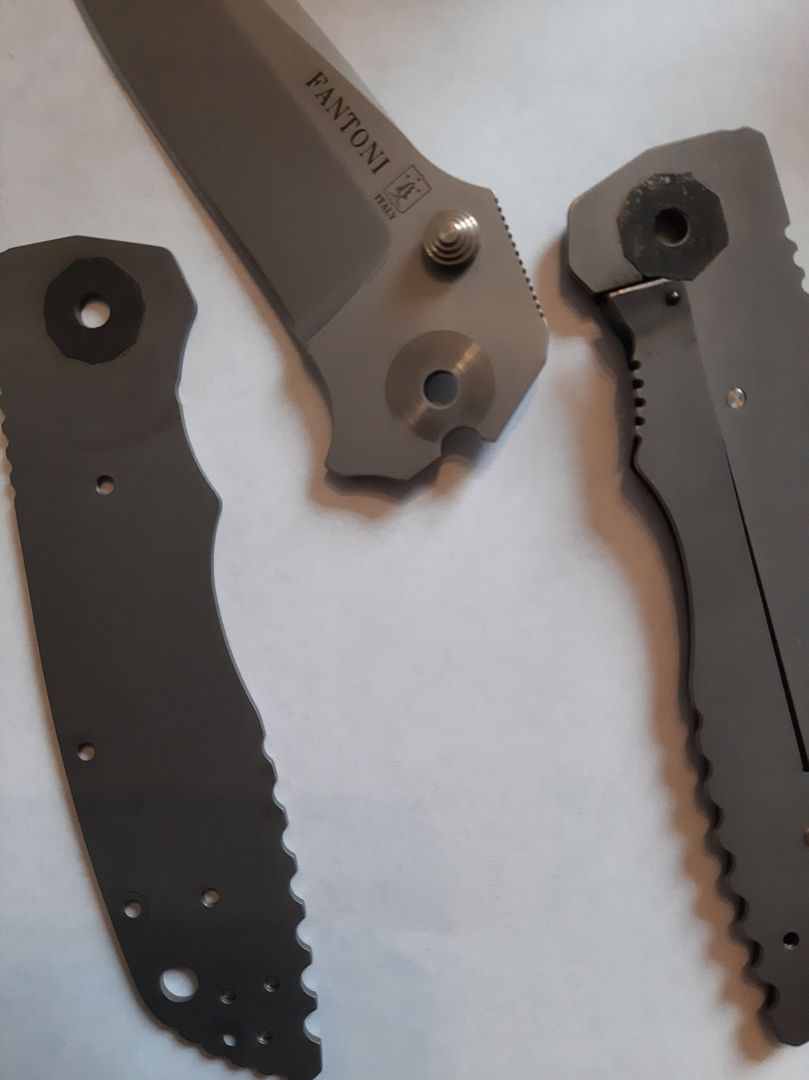Hi everyone,
Yesterday, I cleaned out a Fantoni HB-01 that I bought used. It has beadblasted Ti liners and a beadblasted blade. I found the opening and closing action to sound a bit "gritty". After cleaning and applying a bit of fluorinated grease, the action was smoother, but stil not 100%. My idea is, that this is caused by the friction between the washers and the beadblasted blade. I'm thinking of polishing the area where the washer sits comes into contact with the blade. Would you guys think this would make a difference? And if so, what would be a good way to do that?
I look forward to hearing your thoughts!

Yesterday, I cleaned out a Fantoni HB-01 that I bought used. It has beadblasted Ti liners and a beadblasted blade. I found the opening and closing action to sound a bit "gritty". After cleaning and applying a bit of fluorinated grease, the action was smoother, but stil not 100%. My idea is, that this is caused by the friction between the washers and the beadblasted blade. I'm thinking of polishing the area where the washer sits comes into contact with the blade. Would you guys think this would make a difference? And if so, what would be a good way to do that?
I look forward to hearing your thoughts!




 .
.